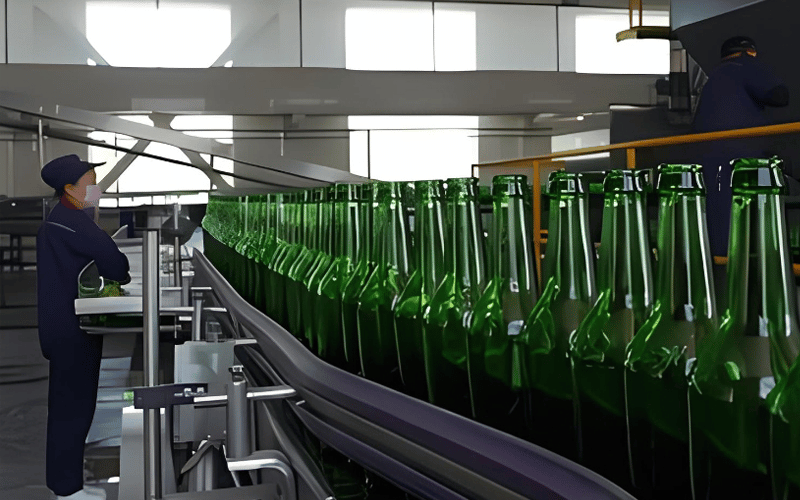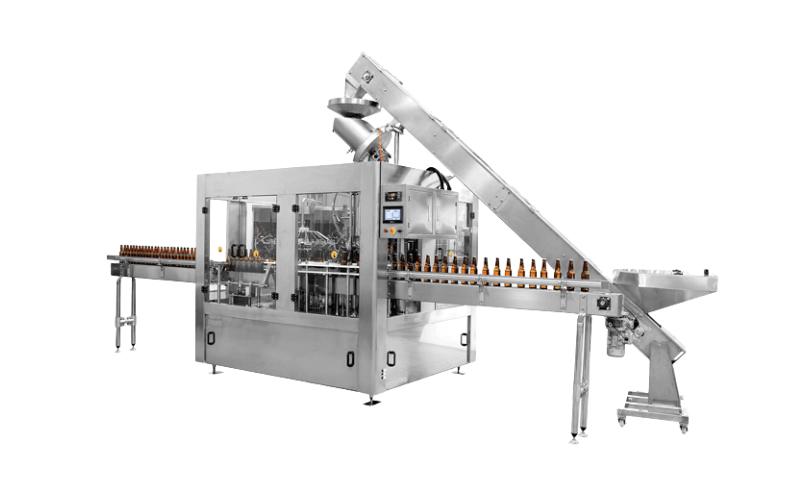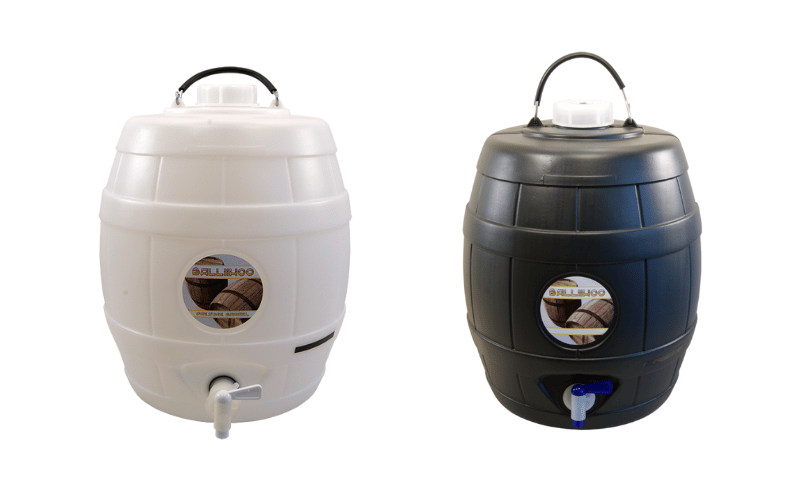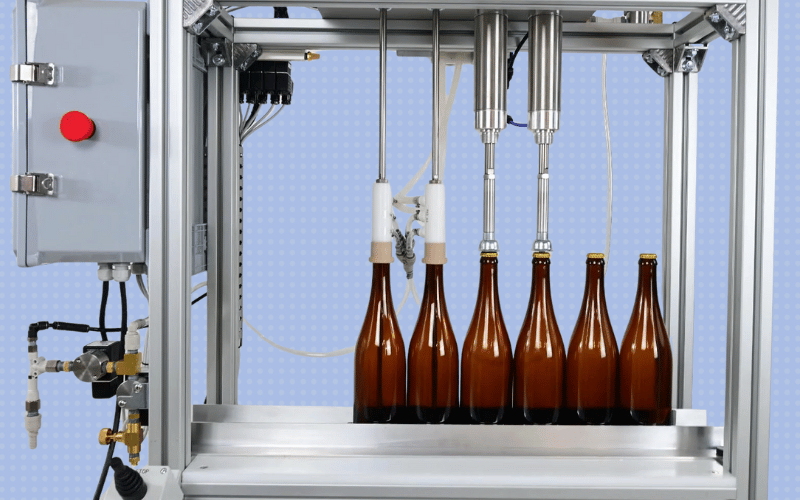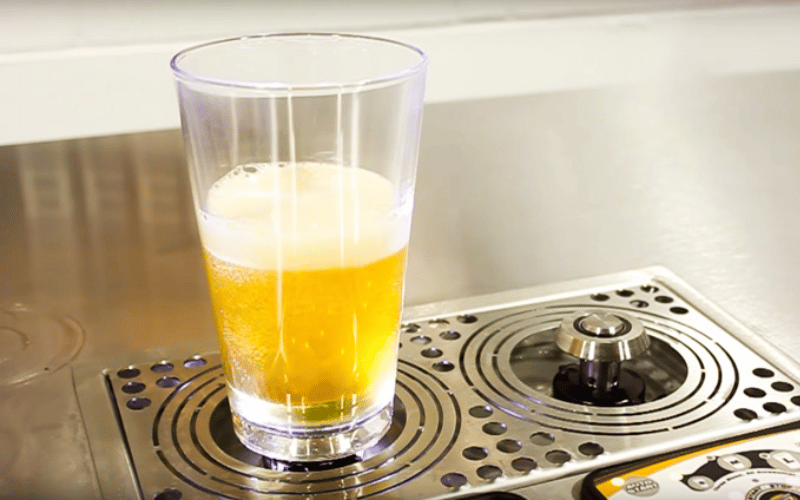Beer bottle filling machines are the backbone of modern brewing operations, ensuring that every bottle of beer is packaged with precision, quality, and efficiency. From small craft breweries to large-scale production facilities, these machines play a vital role in preserving the beer’s flavor, carbonation, and freshness while meeting the demands of consumers. With advancements in technology, breweries now have access to a wide range of filling equipment tailored to their specific needs, whether it’s for small-batch production or high-speed bottling lines. This article explores the essential components, processes, and innovations shaping the beer filling industry, offering insights into how breweries can optimize their operations and stay ahead in a competitive market.
Оглавление
ToggleIntroduction to Beer Bottle Filling Machines
Overview of Bottle Beer Filling
Beer bottle filling is a critical step in the brewing process, ensuring that the product is safely and efficiently transferred from storage tanks into bottles for distribution. This process not only preserves the beer’s quality and carbonation but also ensures consistency in every bottle. Modern разливочные машины streamline this operation, reducing manual labor and increasing production speed.
These machines are designed to handle various bottle sizes and shapes, making them versatile for breweries of all scales. From small craft breweries to large-scale operations, bottle filling equipment plays a vital role in maintaining efficiency and meeting consumer demand.
Importance in the Brewing Industry
Bottle filling machines are essential for maintaining the integrity and quality of beer during packaging. They minimize exposure to oxygen, which can degrade flavor and freshness, ensuring that the beer reaches consumers in its best condition. Additionally, automated systems reduce the risk of contamination, enhancing product safety.
For breweries, these machines also improve operational efficiency by speeding up the bottling process and reducing waste. This allows brewers to meet production targets while maintaining consistent quality, which is crucial for building brand reputation and customer loyalty.
Types of Beer Filling Equipment
- Гравитационные наполнители: These machines rely on gravity to fill bottles, making them ideal for non-carbonated or lightly carbonated beers. They are simple to operate and cost-effective, making them popular among small breweries.
- Наполнители противодавления: Designed for carbonated beverages, these machines maintain pressure inside the bottle during filling to preserve carbonation. They are widely used in medium to large breweries for their precision and efficiency.
- Вакуумные наполнители: These systems use a vacuum to draw beer into the bottle, reducing oxygen exposure and ensuring a longer shelf life. They are particularly useful for high-quality or specialty beers.
- Роторные наполнители: High-speed rotary machines are ideal for large-scale operations. They can fill multiple bottles simultaneously, significantly increasing production capacity while maintaining accuracy.
- Manual and Semi-Automatic Fillers: These are suitable for small-scale or startup breweries. While slower than automated systems, they offer greater control and are more affordable for limited production runs.
Each type of beer filling equipment serves a specific purpose, allowing breweries to choose the best option based on their production needs, budget, and beer type.
Understanding the Filling Process
Steps in the Beer Filling Process
The beer filling process involves several key steps to ensure the product is packaged efficiently and maintains its quality. Each step is designed to minimize waste, preserve carbonation, and prevent contamination.
- Подготовка бутылки: Bottles are first cleaned and sanitized to remove any debris or bacteria. This step is crucial for maintaining product safety and extending shelf life.
- Продувка перед заполнением: Many systems use CO2 to purge oxygen from the bottles before filling. This reduces oxidation, which can negatively impact the beer’s flavor and freshness.
- Наполнение: The beer is transferred from storage tanks into the bottles. Depending on the equipment, this can be done using gravity, counter pressure, or vacuum systems to ensure precision and minimize foam.
- Укупорка: Once filled, bottles are immediately sealed with caps to lock in carbonation and prevent contamination. This step is often automated for speed and consistency.
- Инспекция и маркировка: Filled bottles are inspected for quality, ensuring proper fill levels and secure caps. They are then labeled and prepared for distribution.
Role of Carbonation in Filling
Carbonation plays a critical role in the beer filling process, as it directly affects the beer’s taste, texture, and overall quality. Maintaining proper carbonation levels during filling is essential to delivering a consistent product.
Counter pressure filling systems are commonly used for carbonated beers. These machines maintain equal pressure inside the bottle and the storage tank, preventing excessive foaming and loss of carbonation. This ensures that the beer retains its intended mouthfeel and flavor profile when it reaches the consumer.
Additionally, controlling carbonation during filling helps reduce waste, as over-foaming can lead to product loss and inconsistent fill levels. Properly calibrated equipment is key to managing this aspect effectively.
Challenges in Beer Bottling
Despite advancements in technology, beer bottling comes with its own set of challenges that breweries must address:
- Foaming Issues: Excessive foaming during filling can lead to inconsistent fill levels, product loss, and delays in production. This is often caused by improper pressure settings or temperature fluctuations.
- Oxygen Exposure: Oxygen can degrade the beer’s flavor and shorten its shelf life. Ensuring proper purging of bottles and using airtight seals are critical to minimizing oxygen exposure.
- Техническое обслуживание оборудования: Regular cleaning and maintenance of filling machines are essential to prevent contamination and ensure consistent performance. Neglecting this can lead to costly downtime and quality issues.
- Bottle Variability: Differences in bottle size, shape, or quality can affect the filling process, leading to inefficiencies or equipment malfunctions. Standardizing bottle specifications can help mitigate this issue.
- Масштабируемость: For growing breweries, scaling up production can be challenging. Upgrading to more advanced filling systems requires significant investment and careful planning to avoid disruptions.
By understanding these challenges and implementing best practices, breweries can optimize their beer bottling process and deliver a high-quality product to their customers.
Types of Beer Filling Machines
1. Automatic Bottle Filling Machines
Automatic bottle filling machines are designed to streamline the beer packaging process, making them ideal for medium to large-scale breweries. These machines handle everything from bottle cleaning and filling to capping and labeling, significantly reducing manual labor.
One of their key advantages is speed. Automatic systems can fill hundreds or even thousands of bottles per hour, ensuring breweries meet high production demands. They also offer precision, maintaining consistent fill levels and minimizing waste. Many models include advanced features like CO2 purging to reduce oxygen exposure, preserving the beer’s freshness and flavor.
These machines are highly customizable, allowing breweries to adjust settings for different bottle sizes and carbonation levels. While the initial investment can be high, the long-term efficiency and labor savings make them a worthwhile choice for growing operations.
2. Semi-Automatic Filling Machines
Semi-automatic filling machines are a great option for small to medium-sized breweries that want a balance between automation and manual control. These machines require some operator involvement, such as positioning bottles or initiating the filling process, but they automate key steps like filling and capping.
The main advantage of semi-automatic machines is their affordability. They are less expensive than fully automated systems, making them accessible for startups or breweries with limited budgets. Additionally, they offer flexibility, as operators can adjust settings for different bottle sizes and beer types. While they may not match the speed of automatic machines, they provide reliable performance for small-batch production.
3. Manual Filling Machines
Manual filling machines are designed for small-scale breweries or homebrewers who prioritize control over speed. These machines require full operator involvement, including positioning bottles, initiating the fill, and sealing the containers.
The primary benefit of manual machines is their low cost, making them an excellent choice for breweries with minimal production needs. They are also compact and easy to use, requiring little space or technical expertise. However, manual machines are slower and less efficient than automated options, making them better suited for limited production runs or specialty beers.
4. Rotary Filling Machines
Rotary filling machines are high-speed systems designed for large-scale breweries with high production demands. These machines use a rotating platform to fill multiple bottles or cans simultaneously, significantly increasing output.
Rotary systems are known for their precision and efficiency. They maintain consistent fill levels and minimize waste, even at high speeds. Many models include advanced features like counter pressure filling and integrated capping systems, ensuring the beer’s quality and carbonation are preserved. While rotary machines require a significant upfront investment, their ability to handle large volumes makes them indispensable for large breweries.
5. Counter Pressure Filling Machines
Counter pressure filling machines are specifically designed for carbonated beverages like beer. These machines maintain equal pressure inside the bottle and the storage tank during filling, preventing excessive foaming and carbonation loss.
These systems are ideal for breweries that prioritize quality and consistency. They are commonly used for both small and large-scale operations, as they ensure the beer retains its intended flavor and mouthfeel. Counter pressure machines are versatile and can handle various container types, including bottles and cans.
6. Vacuum Filling Machines
Vacuum filling machines use a vacuum to draw beer into the container, reducing oxygen exposure and preserving the beer’s freshness. These machines are particularly useful for high-quality or specialty beers that require extended shelf life.
Vacuum systems are highly effective at minimizing oxidation, which can degrade the beer’s flavor. They are often used in smaller breweries or for premium product lines. While they may not match the speed of rotary or automatic systems, their focus on quality makes them a valuable addition to any brewery.
By understanding the different types of beer filling machines, breweries can select the equipment that best suits their production needs, budget, and quality standards.
Beer Bottle Fillers vs. Beer Can Fillers
When choosing between bottle fillers and can fillers, it’s important to consider the unique advantages and challenges of each option.
- Beer Bottle Fillers: Bottle fillers are ideal for breweries that prioritize traditional packaging. Glass bottles offer a premium look and feel, making them popular for craft beers and specialty brews. Bottle fillers often include features like counter pressure systems to maintain carbonation and prevent foaming. However, bottles are heavier and more fragile, which can increase shipping costs and require careful handling.
- Beer Can Fillers: Can fillers are gaining popularity due to the lightweight and durable nature of aluminum cans. Cans are easier to transport, stack, and recycle, making them a sustainable choice. They also provide better protection against light and oxygen, preserving the beer’s quality. Can fillers are typically faster than bottle fillers, but they may require additional equipment for sealing and labeling.
The choice between bottles and cans often depends on branding, target audience, and logistical considerations. Some breweries invest in hybrid systems that can handle both formats for maximum flexibility.
Choosing the Right Filler Machine
Selecting the right filler machine is crucial for optimizing your brewery’s operations. Here are key factors to consider:
- Объем производства: Assess your current and future production needs. Small breweries may benefit from manual or semi-automatic machines, while larger operations require fully automated systems to meet demand.
- Type of Packaging: Decide whether you’ll focus on bottles, cans, or both. This will determine whether you need a dedicated filler or a hybrid system.
- Бюджет: Consider both the upfront cost and long-term savings. While automated machines require a higher initial investment, they often pay off through increased efficiency and reduced labor costs.
- Требования к пространству: Ensure the machine fits within your facility’s layout. Compact models are available for smaller spaces, while larger systems may require additional room for operation and maintenance.
- Параметры настройки: Look for machines that allow adjustments for different bottle or can sizes, carbonation levels, and production speeds. This flexibility ensures the equipment can adapt to your evolving needs.
- Maintenance and Support: Choose a machine from a reputable manufacturer that offers reliable customer support and easy access to replacement parts. Regular maintenance is essential to keep the equipment running smoothly.
By carefully evaluating these factors, you can select a filler machine that aligns with your brewery’s goals and ensures a seamless packaging process.
Bottling Line Configuration
Components of a Bottling System
A bottling system consists of several interconnected components that work together to streamline the packaging process. Each part plays a critical role in ensuring efficiency, consistency, and product quality.
- Bottle Washer: This component cleans and sanitizes bottles before filling, removing dust, debris, or contaminants to ensure product safety.
- Разливочная машина: The core of the system, the filling machine transfers beer from storage tanks into bottles. It can use gravity, counter pressure, or vacuum systems depending on the beer type and carbonation level.
- Укупорочная машина: After filling, bottles are sealed with caps to preserve carbonation and prevent contamination. Capping machines are often integrated with the filler for seamless operation.
- Этикетировочная машина: This component applies labels to bottles, ensuring proper branding and compliance with regulatory requirements.
- Конвейерная система: Conveyors transport bottles between different stages of the bottling process, maintaining a steady flow and reducing manual handling.
- Inspection Station: Quality control systems check for proper fill levels, secure caps, and accurate labeling, ensuring only high-quality products move forward.
Integration of Filling and Capping Machines
Integrating filling and укупорочные машины into a single system enhances efficiency and reduces the risk of errors. These combined systems allow for a continuous workflow, minimizing downtime between filling and sealing.
By synchronizing the filling and capping processes, breweries can maintain consistent production speeds and ensure that bottles are sealed immediately after filling. This reduces oxygen exposure, preserving the beer’s freshness and flavor.
Modern integrated systems often include advanced features like automated adjustments for different bottle sizes and real-time monitoring to detect issues. This level of automation not only improves accuracy but also reduces labor costs, making it a valuable investment for breweries of all sizes.
Optimizing the Bottling Line for Efficiency
To maximize the efficiency of your bottling line, consider the following strategies:
- Streamline Workflow: Arrange components in a logical sequence to minimize bottlenecks and ensure a smooth flow of bottles through the system.
- Invest in Automation: Automated systems reduce manual labor, increase production speed, and improve consistency. Look for machines with features like self-cleaning and automated adjustments.
- Регулярное техническое обслуживание: Schedule routine maintenance to keep equipment running smoothly and prevent unexpected downtime. Clean and inspect components like conveyors, fillers, and cappers regularly.
- Monitor Performance: Use sensors and software to track key metrics like production speed, fill levels, and error rates. This data can help identify inefficiencies and guide improvements.
- Train Staff: Ensure operators are well-trained on the equipment to minimize errors and maximize productivity. Provide ongoing training as new technologies are introduced.
- Adapt to Demand: Choose flexible systems that can handle different bottle sizes, beer types, and production volumes. This adaptability allows you to scale operations as needed.
By focusing on these areas, you can create a bottling line that operates efficiently, reduces waste, and delivers a consistent, high-quality product to your customers.
Future Trends in Beer Filling Technology
Advancements in Filling Equipment
The beer filling industry is rapidly evolving, with new technologies enhancing efficiency, precision, and quality. Modern filling machines are increasingly incorporating automation and smart features to streamline operations.
- Интеграция интеллектуальных датчиков и IoT: Advanced machines now use sensors and Internet of Things (IoT) technology to monitor fill levels, pressure, and temperature in real time. This ensures consistent quality and reduces waste by detecting issues early.
- Высокоскоростные системы розлива: Newer equipment is designed to handle higher production volumes without compromising accuracy. These systems are ideal for large breweries looking to scale operations.
- Customizable Machines: Manufacturers are offering more flexible machines that can adapt to different bottle or can sizes, carbonation levels, and beer types. This versatility is especially valuable for breweries producing a variety of products.
- Улучшенный контроль пенообразования: Advanced counter pressure systems and vacuum technology are reducing foam during filling, ensuring consistent fill levels and minimizing product loss.
Sustainability in Beer Bottling
Sustainability is becoming a top priority in the beer industry, and filling technology is adapting to meet these demands.
- Energy-Efficient Machines: Modern filling equipment is designed to consume less energy, reducing the carbon footprint of the bottling process. Breweries are increasingly investing in machines with energy-saving features.
- Recyclable and Lightweight Packaging: Filling systems are being optimized for eco-friendly materials like lightweight aluminum cans and recyclable glass bottles. These options reduce waste and appeal to environmentally conscious consumers.
- Сохранение водных ресурсов: Advanced cleaning and filling systems use less water, addressing one of the brewing industry’s biggest sustainability challenges. Some machines even recycle water used during the cleaning process.
- Углеродно-нейтральные операции: Breweries are adopting carbon-neutral filling lines by integrating renewable energy sources and offsetting emissions. This trend aligns with broader industry goals to reduce environmental impact.
The Rise of Craft Brewing and Its Impact
The craft brewing boom has significantly influenced beer filling technology, driving demand for smaller, more versatile systems.
- Compact Filling Machines: Craft breweries often operate in limited spaces, so manufacturers are developing compact machines that deliver high performance without requiring large facilities.
- Small-Batch Flexibility: Craft brewers frequently experiment with new flavors and styles, requiring filling systems that can handle small batches efficiently. Machines with quick changeover capabilities are becoming essential.
- Focus on Quality: Craft brewers prioritize quality over quantity, leading to increased demand for equipment that minimizes oxygen exposure and preserves the beer’s unique characteristics.
- Brand Differentiation: Craft breweries often use distinctive packaging to stand out. Filling machines are now designed to accommodate custom bottle shapes, sizes, and labeling requirements.
These trends highlight how beer filling technology is evolving to meet the needs of a dynamic and environmentally conscious industry.
Часто задаваемые вопросы
Q: What is a small beer filling machine?
A: A small beer filling machine is bottling equipment designed for efficiently filling beer into bottles or cans. It is ideal for small-scale breweries that need reliable machinery to package their beverages. Depending on production needs, these machines can be semi-automatic or fully automated.
Q: How does a beer filling machine work?
A: A beer filling machine dispenses beer into bottles or cans using a filling valve. It often uses counter pressure to prevent carbonation loss during the process. Many machines integrate with capping systems to seal the containers immediately, ensuring the beer retains its quality and freshness.
Q: What types of containers can a small beer filling machine handle?
A: A small beer filling machine can handle a variety of containers, including стеклянные бутылки, aluminum cans, and even kegs. These machines are adjustable to accommodate different sizes and filling requirements, making them versatile for various packaging needs.
Q: What are the benefits of using an automatic beer filling machine?
A: An automatic beer filling machine increases efficiency and ensures consistency in the filling process. It reduces manual labor, minimizes contamination risks, and handles higher production rates, enabling breweries to package more beer in less time.
Q: Can a small beer filling machine be used for carbonated beverages?
A: Yes, a small beer filling machine is designed to handle carbonated beverages. It uses techniques like counter pressure filling to prevent excessive foaming and maintain carbonation integrity throughout the process.
Q: What is the typical production capacity of a small beer filling machine?
A: The production capacity of a small beer filling machine depends on the model and specifications. Many machines can fill several hundred bottles or cans per hour, making them suitable for small-scale production. Advanced models may offer higher capacities based on their automation level.
Q: How do I choose the right beer bottling equipment for my brewery?
A: To choose the right beer bottling equipment, consider your production scale, container type (bottles or cans), and desired automation level. Evaluate the reliability of the supplier and ensure the equipment is compatible with your existing brewing setup. Researching machine features and comparing options will help you make an informed decision.
Q: What maintenance is required for a small beer filling machine?
A: Regular maintenance is crucial for keeping a small beer filling machine efficient and durable. Tasks include routine cleaning, inspecting parts for wear and tear, and ensuring the filling valves and capping mechanisms work properly. Following the manufacturer’s maintenance guidelines will help prevent breakdowns and maintain consistent production quality.
Заключительное резюме
The evolution of beer bottle filling machines has transformed the brewing industry, offering solutions that enhance efficiency, maintain product quality, and meet sustainability goals. From understanding the intricacies of the filling process to choosing the right equipment and optimizing bottling lines, breweries have a wealth of tools at their disposal to streamline operations. As the industry continues to embrace advancements like IoT integration, energy-efficient systems, and flexible designs, beer filling technology is poised to meet the growing demands of both large-scale producers and craft brewers. By leveraging these innovations, breweries can deliver exceptional products while staying adaptable in an ever-changing market.

